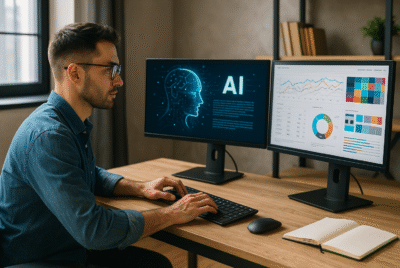In the modern remote-first world, people don’t browse — they blink. Every swipe, search, or scroll is a micro-moment where intent meets opportunity. For freelancers and remote workers, these moments define how they find tools, courses, and opportunities online.
Understanding and acting on micro-moments helps brands like Employ Digital reach the right audience at the right time with content that solves real-world problems instantly.
What Are Micro-Moments?
According to Think with Google, micro-moments are “intent-driven instances when a person turns to a device to act on a need.” These can be small, spontaneous decisions — searching for a productivity app, checking time-tracking tools, or comparing payment solutions.
For remote workers who rely heavily on mobile devices, micro-moments often determine which service they trust or buy. Being present during those seconds with meaningful, fast, and friction-free content is what drives conversions.
Why Micro-Moments Matter for Remote Professionals
Remote professionals have shorter attention spans but higher intent. They multitask across platforms — from Slack messages to quick Google searches. Traditional marketing funnels fail here because decision-making is nonlinear and instantaneous.
A freelancer who searches “best invoice app” doesn’t want to read ten blog posts — they want a one-click recommendation, a free trial, or a side-by-side comparison chart. Winning that moment builds credibility faster than any long campaign.
Mapping the Journey of Remote Users
Start by identifying the typical micro-journey for your target user. Each stage reveals intent and timing:
- Trigger: A task or pain point, e.g., “I need faster file-sharing.”
- Intent: To know, go, do, or buy something immediately.
- Channel: Mobile search, YouTube, LinkedIn, or voice assistant.
- Action: Clicking a CTA, downloading, or starting a trial.
Mapping this flow clarifies where your content or ads should appear to meet users’ needs instantly.
Crafting Content for Micro-Attention
Micro-moment content must answer questions in under 60 seconds. Visuals, tools, and micro-interactions make the difference. Keep these formats in your strategy:
- Quick explainer videos: Under a minute, mobile-optimized, answering one question.
- Interactive widgets: Calculators, checklists, or templates that offer instant results.
- Carousel summaries: For Instagram or LinkedIn, explaining step-by-step insights visually.
According to HubSpot, people retain 65% more information when brands provide quick visual content during high-intent searches.
Optimizing for Mobile & Voice Search
Remote workers often use voice commands while multitasking. Focus on conversational SEO: phrases like “how do I track freelance time?” or “best remote work CRM.” Make sure your site loads under three seconds — each second delay costs engagement.
Also, use schema markup for FAQs and reviews. Google’s voice assistants pull direct answers from well-structured pages, giving you visibility in zero-click searches.
Automation and Personalization Tools
Micro-moment marketing scales only through automation. Combine analytics with behavior tracking tools like Google Analytics 4 and personalized outreach via CRM workflows.
For instance, when a user downloads a resource, send a follow-up email with a related checklist or tool recommendation. Automation doesn’t replace human touch — it ensures timing and context align with user intent.
Practical Examples of Micro-Moment Success
A time-tracking startup noticed users dropping off mid-signup. By adding a pop-up offering a “2-minute setup guide,” conversions rose 28%. Another company used mobile push notifications for users revisiting its pricing page and saw 40% more trials.
Both cases highlight that success lies not in big campaigns, but in small, precise interactions delivered at the right second.
Metrics That Matter
Measure results differently. Traditional impressions are less meaningful than engagement velocity — how fast users interact after exposure. Focus on:
- CTR within 5 seconds of view
- Micro-conversions (downloads, saves, short plays)
- Assisted conversions before purchase
Tracking these metrics helps reveal which micro-moments contribute most to long-term retention and loyalty.
Conclusion
In the attention economy, remote professionals act quickly and expect relevance instantly. By mastering micro-moments — and meeting intent where it begins — your brand can capture attention, build trust, and create lasting digital relationships.





